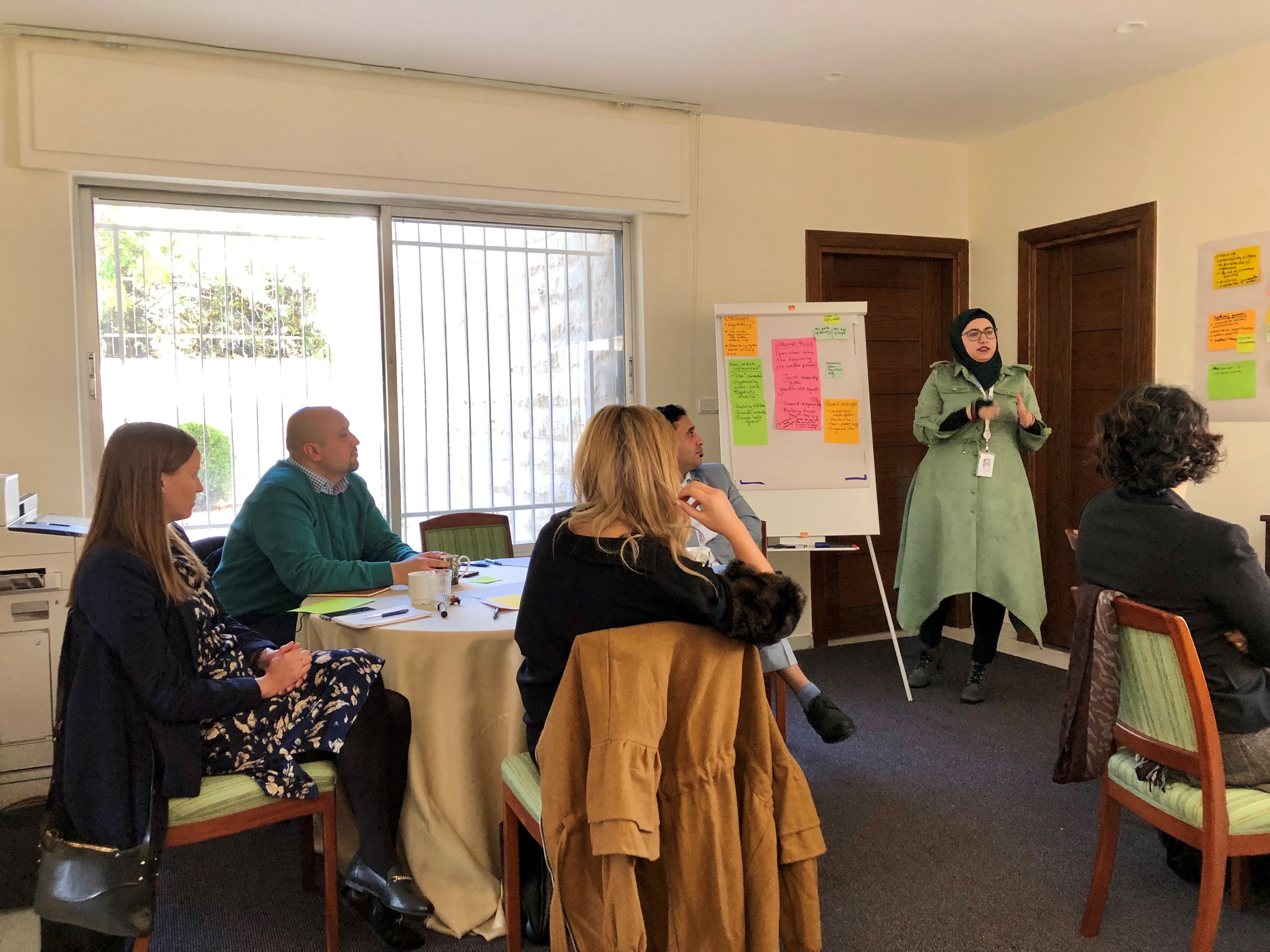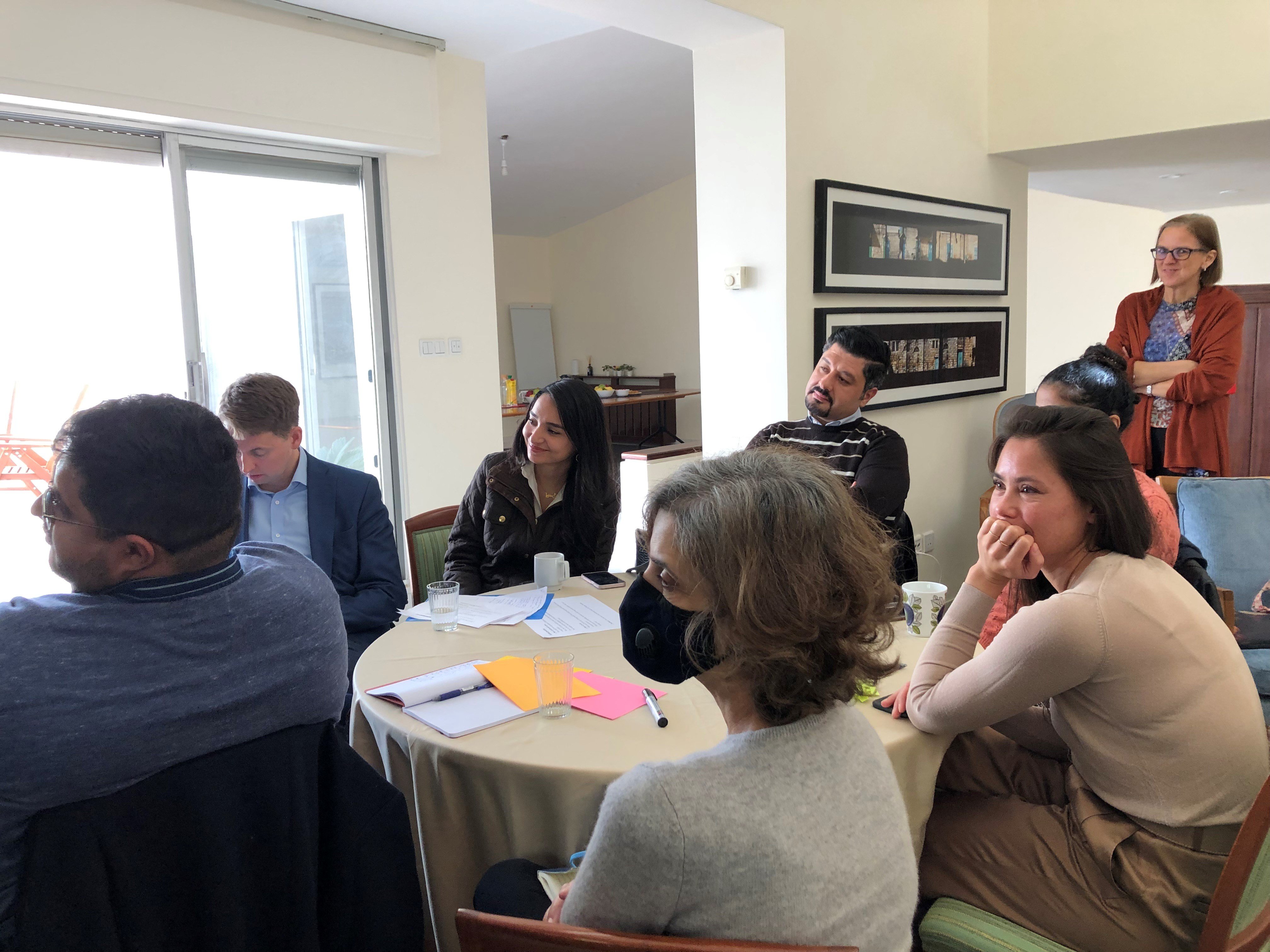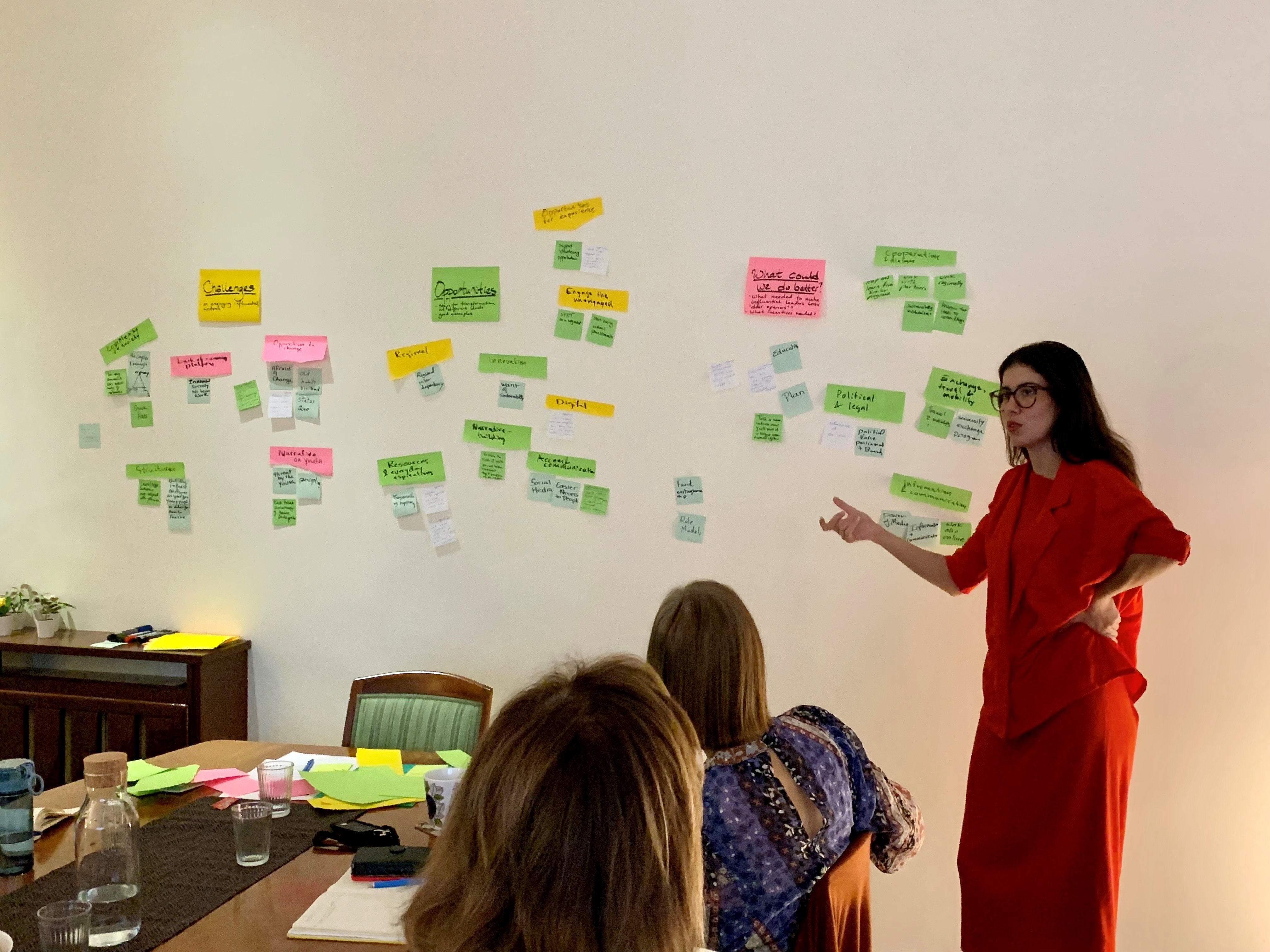On November 23 the Swedish Dialogue institute for the Middle East and North Africa hosted two workshops in Amman on the role of influential actors in unlocking meaningful youth participation in the MENA region. One workshop was held with young participants and another with influential actors. The workshops served as an opportunity to align the Dialogue Institute’s work on youth participation with the needs and aspirations of young people, as well as to engage with influential actors, who could play a potential role as “door openers”.

People in positions of influence and power can play a major role in enhancing social inclusivity and cohesion, by forging meaningful alliances with engaged young people and by providing them with opportunities to exercise leadership and take responsibility for decision-making. To this end, dialogue and engagement with influential actors about their role as “door openers” and in enabling young people's engagement could be a key entry point in ensuring actions and reforms that promote young people’s participation and innovation.
The following recommendations emerged from the workshop with young participants:
Building mutual interest and a common ground for dialogue: In order to engage more meaningfully with influential actors, the interests and priorities of influential actors need to be mapped and understood. By aligning the youth narrative with the interests of influential actors, showcasing how to link their priorities with the aspirations of young people and engaging them regularly, they could be become more willing to engage youth. Building common ground for dialogue is crucial. To this end, differentiated approaches are needed for various types of influential stakeholders (political parties, religious leaders, business leaders, parents, and tribes).
Conducting inclusive outreach: Meaningful youth engagement requires the use of inclusive ways of reaching out to youth. Today, engagement with youth often includes elements of tokenism and ticking boxes. Participants stressed that young people should be approached as partners and youth “connectors” could be used at various levels to connect “organically” with youth at the local, national and regional level. In particular, marginalized youth groups must be involved, and removing language barriers will help improve broader participation. It was also important to contextualize efforts, as to acknowledge different national and local contexts.

Going beyond awareness: Participants noted that awareness-raising efforts towards youth often miss follow-up steps to engage the young over the long term. Programs should be action-oriented, rather than based on the dissemination of knowledge alone.
Dialogue, not monologue: Participants stressed that in order to meaningfully engage youth it is important to foster safe spaces by opening doors for co-creation. Much of the engagement today tends to be top-down rather than bottom-up. In order to address this, the principles of co-creation and joint ownership should be applied when designing dialogues, projects, and initiatives. Influential actors should also be more attentive and mindful in dialogues with young people. With these changes, dialogues between youth and people in positions of influence could hopefully be based on a trust, where young people are met as equals.
Alliance-building and fostering a network of peers: Participants noted the need invest in educational programmes that support the development of active young citizens. Mentoring, peer-to-peer support, network-building and organic development are considered essential elements.
The following recommendations emerged from the workshop with influential stakeholders:
Addressing opposition to or fear of change: Several participants noted that opposition to change, including a fear of instability or challenging or changing the status quo, remains one of the key challenges to engaging influential stakeholders in actions for inclusive participation. They noted that the political space is narrow and often characterized by vested interests. In other cases, the understanding of what genuine participation entails is lacking and entrenched narratives of youth as a threat may persist. It is important to recognise youth in the citizenry and as part of the bigger socio-economic system. To address this, the narrative of youth as a threat should be challenged, and trusted fora, where young people and influential stakeholders could meet, should be developed, all while bearing in mind the aforementioned causes of fear. To help foster an openness to change, it will be essential to demonstrate the viability of using innovative new ideas, while keeping leaders/adults aware and knowledgeable of new trends. Participants suggested better coordination among the adult generation and a government plan to utilize youth where they fit best.
Narrative and meaningful transition options: Participants discussed “selling points” that could make inclusive participation a more compelling narrative for influential stakeholders. They noted the need for dignified exit strategies for adults who want to step down; for instance, improved retirement plans would allow older people in power to transition more easily out of their positions. But it is not a matter of either or, as both younger and older people are needed in positions of power. Participants also emphasized the importance of clear and consistent messaging about the risks of not including young people. If young people are left out of formal systems of influence, these spaces will most likely lose legitimacy among youth, and they would seek other avenues for change instead.

Intergenerational cooperation and dialogue: Participants noted a lack of common platforms, which include both youth and older generations. Intergenerational cooperation and dialogue could bridge generational divides and build trust between generations. To do this successfully, lessons learned should be extracted from previous intergenerational programmes, dialogues should focus on action, and sustained efforts for engagement should be built in. Regional intergenerational dialogue is also needed, as are improved communication channels between youth and influential stakeholders. Digital opportunities, ICT (Information and Communication Technology) and social media should be utilized to challenge narratives and engage in dialogue.
Engaging the unengaged: Participants noted the need for better outreach so as to engage the unengaged. Building agency in young people is best done from an early age, by ensuring that elements of participation and engagement are stressed in school. A large part of the young population in MENA is defined as NEET (Not in Education, Employment, or Training), and thus at risk of social alienation. Access to education and meaningful employment for youth are thus key vehicles for their larger societal engagement. Education and employment should also be coupled with further opportunities for gaining relevant experience, by supporting volunteering, building infrastructure for youth to thrive and by exposing youth to information about laws and policies from an early age. One idea that was suggested is for youth groups to “shadow” municipal assemblies, so as to learn about local structures and processes of decision-making.